
For the first time, I’m going to try my hand at an ink review. Whether or not I know the ins and outs of inks and despite my small arsenal of inks, I think it’s worthwile to document the path of becoming a fountain pen user. Let’s see how I do.
The Pilot/Namiki line of Iroshizuku inks could be the most well-known ink in the world. The inks come in an assortment of colours that perform admirably in all fountain pens. I have yet to try one of the “not-safe-for-work” Iroshizuku inks, but I’m sure it’s only a matter of time.
Instead, I’m fascinated with the more subdued Iroshizuku inks. And like everyone else, I jumped into the foray with Kon-Peki.
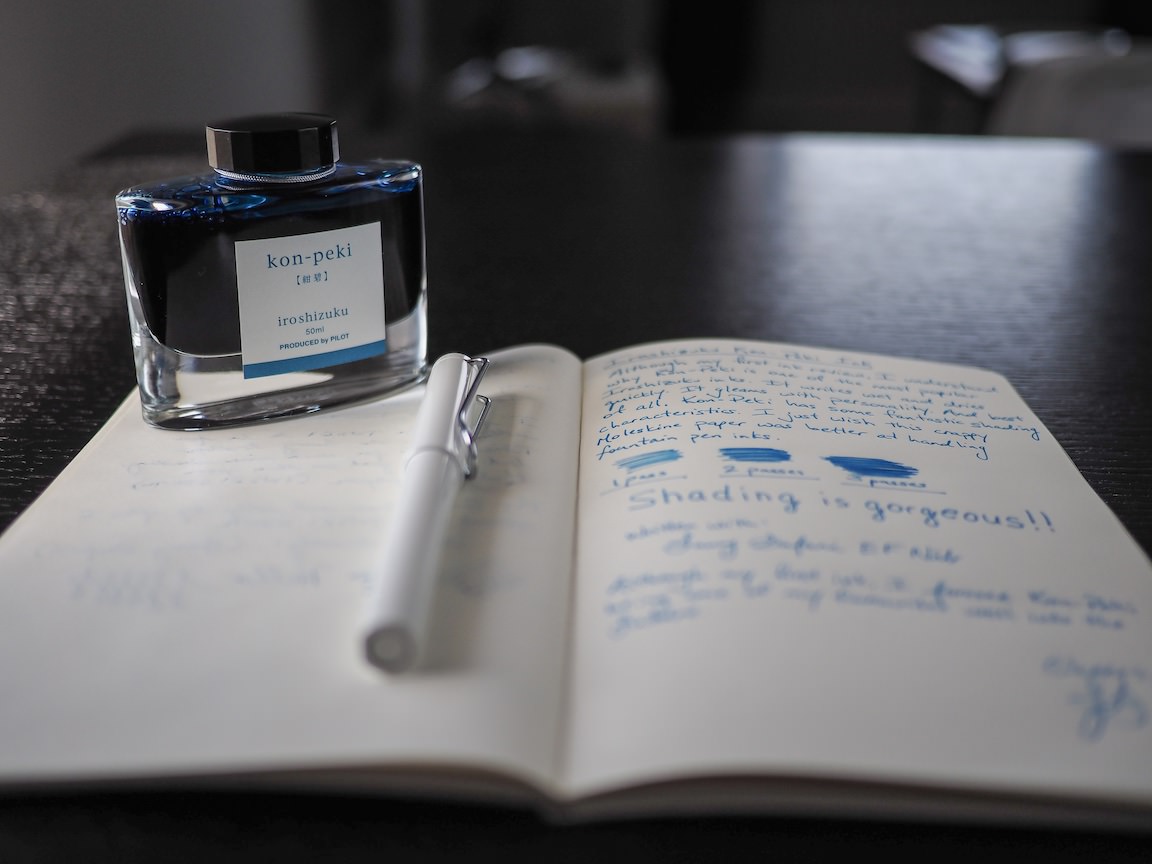
Kon-Peki — known as Deep Cerulean Blue — is generally one of the first high-end inks fountain pen newbies purchase at the onset. Although the colour and shading characteristics are simply fantastic, the Iroshizuku bottle and packaging is the best part of the experience.
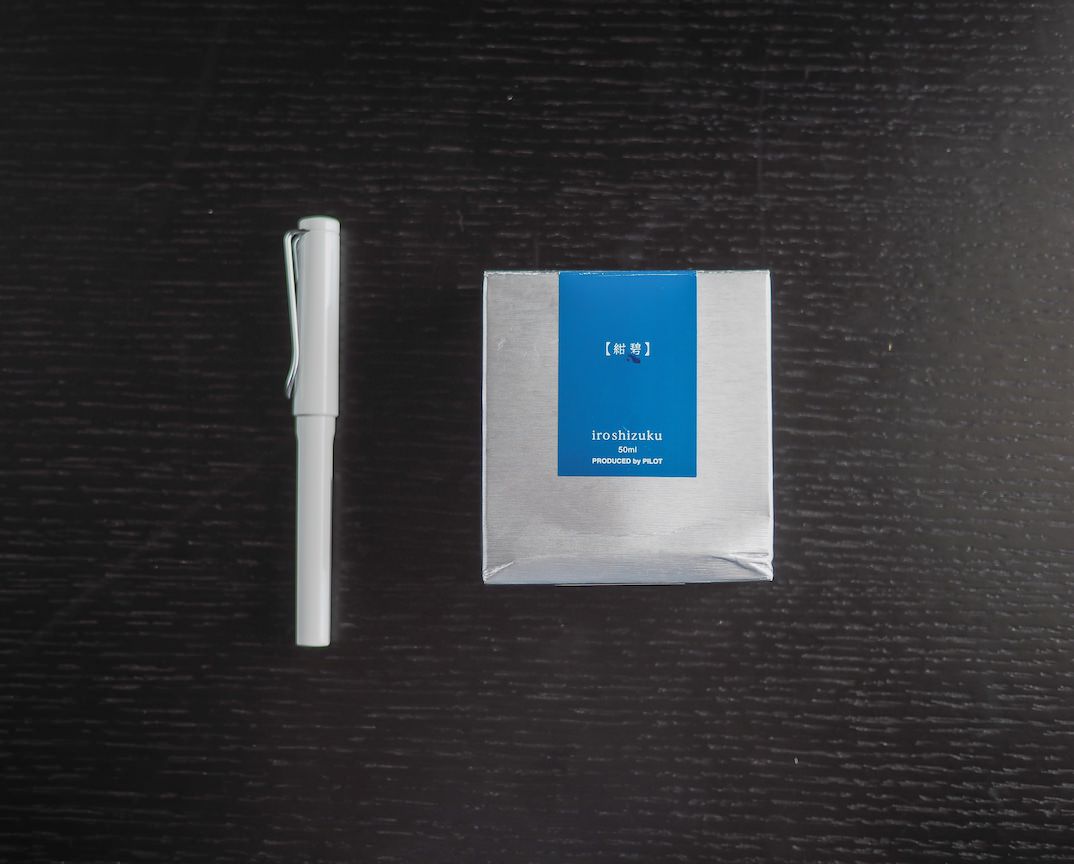
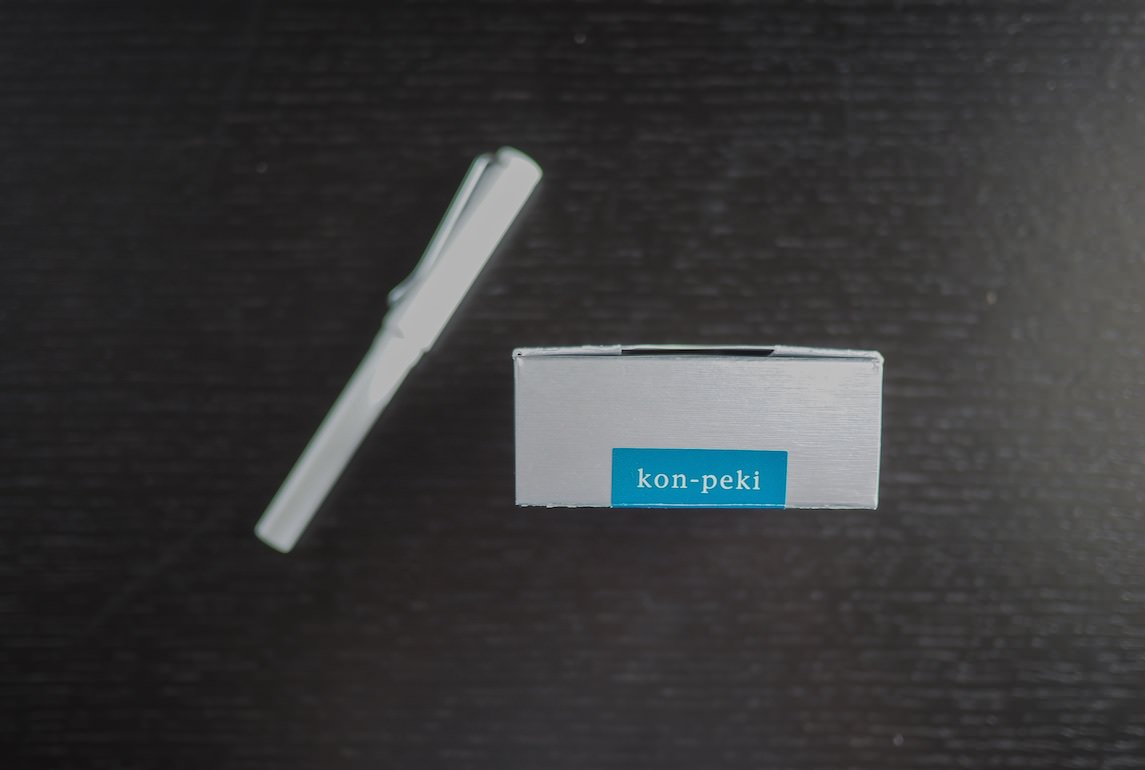
I purchased this bottle of Kon-Peki at the Fountain Pen Hospital in New York City back in July. When the gentleman brought the package to the front counter, I thought he had made a mistake — the box was far too high-end to be housing a simple bottle of ink.
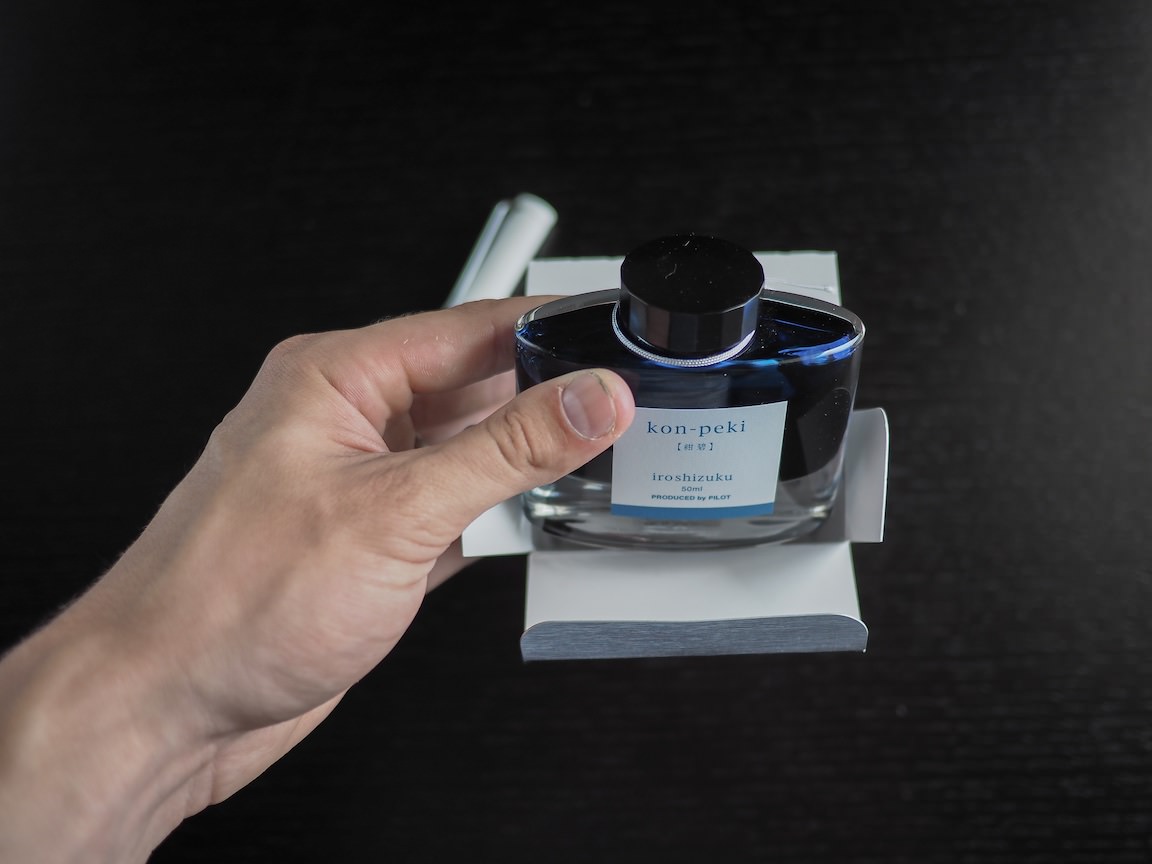
However, the box was only half the story. Iroshizuku ink bottles look more akin to a bottle of perfume than a bottle of ink.
The thick glass encasing the magical elixir inside is both breathtakingly beautiful and surprisingly durable. Breaking one of these bottles would take a bit more work than I would have originally guessed.
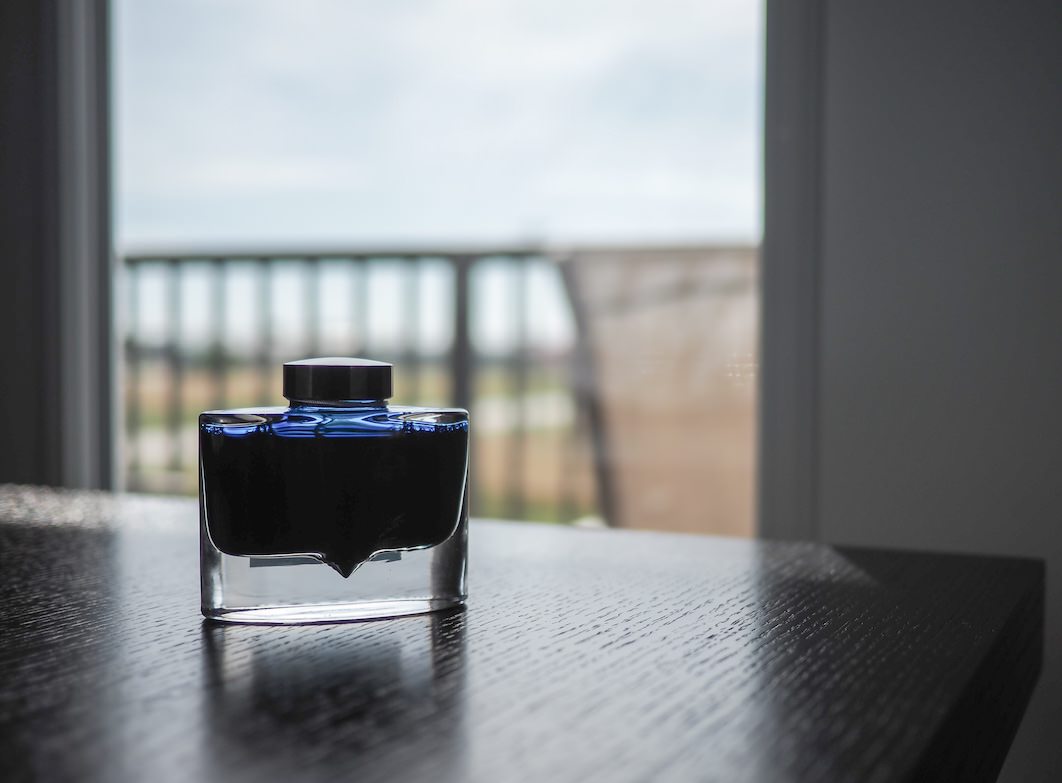
The bottom of the bottle is a thick slab of 1” glass that curves graciously to the top. This 1” slab also contains a superior emptying mechanism — the tapered hole at the bottom of the bottle allows your nib to suck every last drop from the 50ml bottle. Like its durability, the Iroshizuku Kon-Peki bottle combines design beauty and utility prowess in one amazing package.
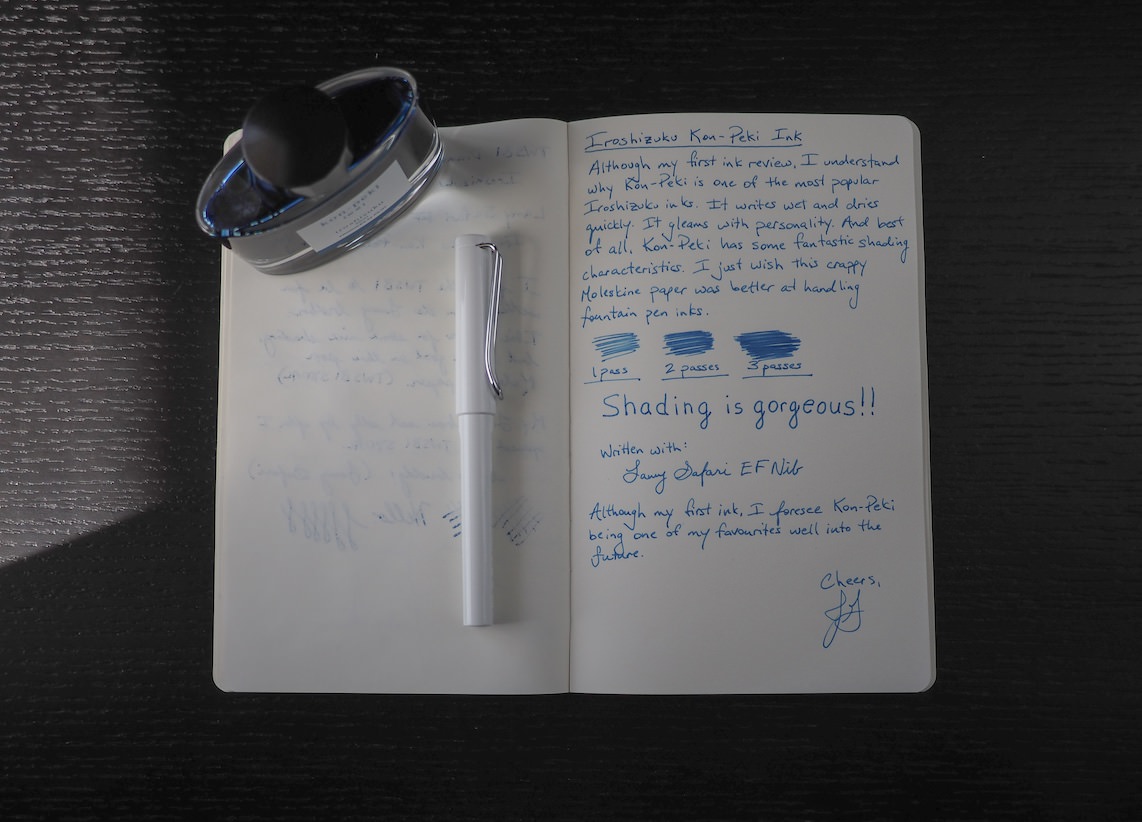
Alas, the real story here is not the bottle of ink, but the bottle of ink. And Kon-Peki doesn’t disappoint as the general first-time ink purchase.
Deep Cerulean Blue is a fairly accurate gauge of Kon-Peki’s colour, yet I wouldn’t venture to say this ink is deep enough to be mistaken for a blue ballpoint ink. The blue is spunky, jubilant and more cheerful than what many consider “blue pen” and I love the contrasting attitude. I believe Kon-Peki is safe for work, but you may get an odd look from time to time if you hand over an official document signed in such a cheerful colour.

Kon-Peki also introduced me to the world of shading. As I wrote, I began to notice the darker tips of all my pen strokes. Each stroke began light and finished dark, invoking a unique character for every letter or number. Kon-Peki isn’t the best shading ink on the market, yet I can’t help but smile when I flip through my Baron Fig and see the artistic flair that only the ink could bring out.
Lastly, I’ve had little to no problems with Kon-Peki’s drying time. All fountain pen inks go on wetter than a standard ballpoint or rollerball, so it takes a bit of getting used to. Regardless, Kon-Peki dries quick enough that a slight hesitation before closing your book is all that’s needed to avoid smudging.

I am still an ink newbie by all counts. I only have two Iroshizuku inks in my arsenal and I have never tried a different brand. So, in the end, take my words for what they are worth.
Either way, Kon-Peki is a fantastic — albeit slightly audacious — colour that will inspire creativity right from the start. Iroshizuku inks are expensive, but I doubt you’ll feel your money is wasted.
To be frank, I think the 1” glass bottle alone is worth the money. Adding a little extra spunk to your notes and documents is just added value.